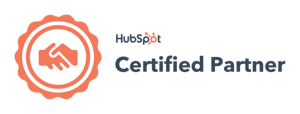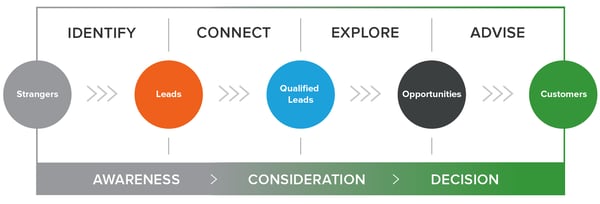Welcome to Step 09. Want to jump back to our full 11 step Business Growth process?
 As a HubSpot Certified Partner, we improve your sales process so that it’s consultative, in-depth, and infused with content to ensure you give value, as a way to educate and nurture your leads and customers. We also take the 360 approach of leads to prospects → prospect to customers → repeat customers to evangelists, the journey never ends…
As a HubSpot Certified Partner, we improve your sales process so that it’s consultative, in-depth, and infused with content to ensure you give value, as a way to educate and nurture your leads and customers. We also take the 360 approach of leads to prospects → prospect to customers → repeat customers to evangelists, the journey never ends…
How do we help sales? We enable salespeople by providing content, deal support, training, best practices, knowledge, and the right tools and technology throughout the sales process.

Your sales process is setup in HubSpot CRM and HubSpot Sales as deal stages, Templates, and Sequences and your sales playbook defines:
1. Connecting to open the conversation
This is your sales team’s first live conversation with a prospect. On this call, you introduce yourself, break down resistance, get into a conversation, and ultimately schedule a first appointment.
This call isn’t about sales - it’s about helping everybody! That will sound strange to most owners, leaders, and salespeople, but consider the ways that we, The Tree Group, can help:
2. Exploring to excite and assess fit
The Exploratory process, besides being an opportunity to share with your prospects, is an opportunity to learn from your prospects. Ultimately by learning about your prospect, you can determine if they need your help, are interested in your help, and if you can help. Use the guide below for questions you can use in different parts of the process. You won’t use all or even most of the questions on a single call so select the ones that will help the most. This call is also about qualifying so we’ll cover a lot of questions about:
The end of this stage is about assigning homework to your prospect to gauge their level of engagement and build up a picture of their needs and demands. Home work ideas at this stage include Graders, Metrics, Analysis
3. Goal setting and planning
If you have a consultative sales process, having a goal setting and planning stage is helpful to establish targets and to determine a plan that can help your clients reach their goals. Before the meeting ends, you’ll be giving a sense pricing and, if services are included, resource requirements. At this stage we’ll cover:
4. Demo
Not always needed, unless you have a product that your prospects will use, either physically or online, the demo stage is where you prove you know the right solution for your prospect and will setup a personalised demo. This is the show how your product will work for your prospect. It’s your chance to show that you fully understand your prospects requirements and have the solution to help
5. Advising to close the sale
So far you’ve Identified qualified leads, Connected with prospects to open the sales conversation, and Explored with prospects to excite and assess fit. The next step is to present and close. At this stage your playbook helps you:
Hero and positioning statements - these are descriptions of your Ideal customers challenges followed by a question as to whether it resonates or not.
Lead qualification matrix, created earlier in the process to identify sales ready leads
Views in the CRM for your sales team to easily identify your leads and customers
Advice on organising your day - Block time out through the day for sales activity, planning, research, development.
Make sure to leave spaces either side for checking emails and other regular tasks. We recommend reading Work Smarter: Live Better by Cyril Peupion
We’ll include some information on the best time to make sales calls and will also recommend an app that works in HubSpot and gives recommended times and days to email/call each contact.
Then we’ll run some role plays to practice the approach
We’ll also consider your activity for the different lead sources
Next we come up with the contact list for your sales team to start working. Part of this activity includes creating Smart lists that auto update as new people match the criteria and Static lists for targeting a fixed list of people. We’ll consider:
And before we reach the final step we look at how Workflows and automation can reduce your manual work
Then, it’s about coaching your sales team through the process so they’re efficient and effective at sales to help you grow your business.
Once your sales process is complete, we follow the agile approach of 1) theory, 2) action, 3) outcome, 4) learn...

We use cookies to provide the services and features offered on our website, and to improve our user experience
Cookies are small files or other pieces of data which are downloaded or stored on your computer or other device, that can be tied to information about your use of our website (including certain third party services and features offered as part of our website)
By clicking "I Accept" you agree to such use of cookies, unless you later decide to disable them
Please note that if you delete or disable our cookies you may experience interruptions or limited functionality in certain areas of the website.